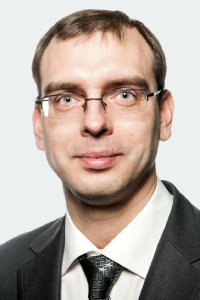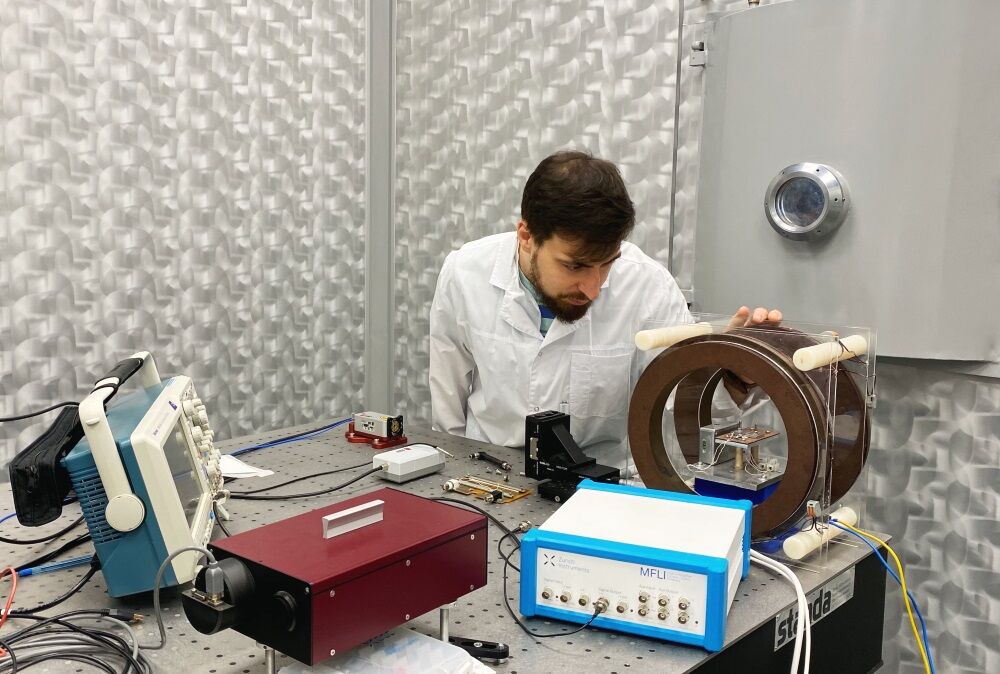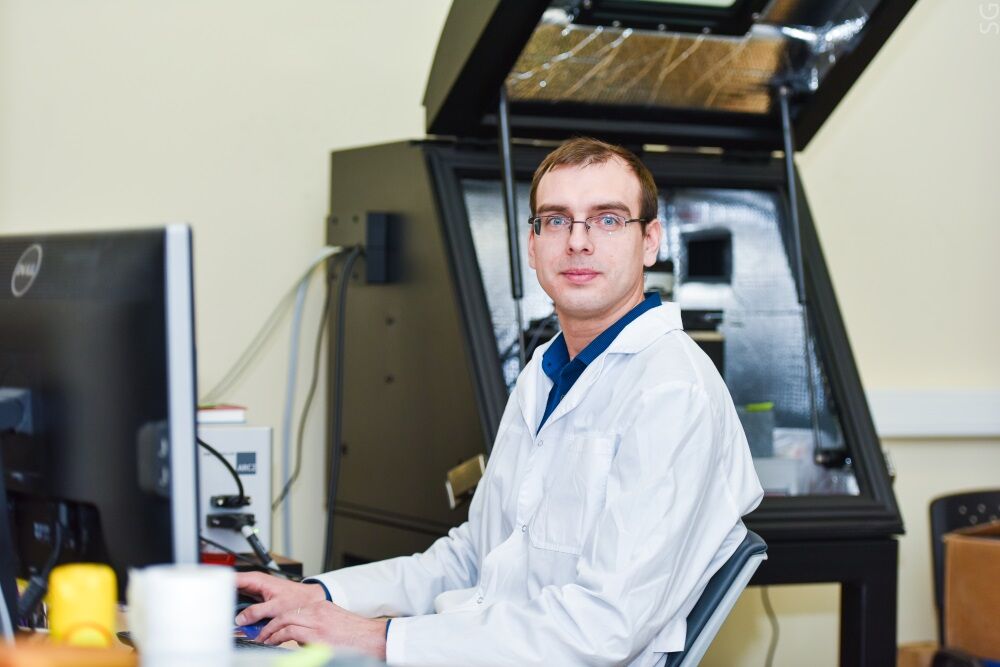The Laboratory of Oxide Ferroelectric Physics (OFP Laboratory) was established in 2020 as part of the state assignment of the Ministry of Education and Science of the Russian Federation.
The head of the laboratory is PhD in physics and mathematics, Dmitry Alexandrovich Kiselev, h-index (Scopus) = 20.
Staff of the OFP laboratory includes 24 persons, 15 of which are scientific workers (10.1 full-time employees). Students, postgraduate students and young scientists are actively involved in scientific work, the average age of employees at the end of 2020 does not exceed 40 years.
Laboratory activities
The main purpose of the OFP laboratory is to obtain new magnetoelectric composite materials (so-called “composite multiferroics”) based on oxide ferroelectrics with an ordered domain structure, as well as to study the properties of such materials and design devices based on them.
Composite multiferroics based on bulk mono- and polycrystalline and thin-film ferroelectrics, amorphous metallic glasses, thin films and foils of ferromagnetic metals and alloys, and bonding materials are the objects of research.
Among the possible applications of composite multiferroics one of the most promising and close to practical implementation is the development on the basis of such materials of highly sensitive sensors of ultraweak magnetic fields, that they are able to operate at room temperature and allow contactless measurement of ultraweak currents in low-power devices and electronic circuits, as well as in living organisms. One of the possible applications for which bulk and composite magnetoelectrics have been intensively studied in recent years by many of the world’s leading scientific groups is the possibility of using them in non-invasive diagnostic devices as sensors of ultraweak magnetic fields induced by currents flowing in neurons of living organisms (in particular, in the heart and central nervous system). Thus, magnetoencephalographs and magnetocardiographs allow early diagnosis, localization and study of such brain and heart diseases as multiple sclerosis, Alzheimer’s disease, schizophrenia, chronic alcoholism, neuralgia of different genesis, myocardial infarction, arrhythmia. Creation of new magnetoelectric materials based on oxide ferroelectrics with an ordered domain structure will reduce the cost of existing magnetic diagnostic devices, which will contribute to their widespread use in medical practice. The ease of fabrication and the possibility of miniaturization of this type of structure will allow the creation of more affordable magnetic diagnostic devices.
Other promising devices using active elements based on composite multiferroics are microwave phase shifters, electronically tunable microwave resonators and delay lines, throw energy collection systems, and magnetoelectric gyrators.
Main fields of scientific activitiy of the laboratory
- Development of numerical methods for calculation of magnetoelectric parameters of layered composite magnetoelectrics.
- Investigation of the influence of the domain structure of the ferroelectric phase on the properties of magnetoelectric composites.
- Development of a technique for local formation of charged interdomain boundaries in bulk single crystals of
180-degree LiNbO3 and LiTaO3 segnelectrics and investigation of electrophysical properties of such boundaries. - Synthesis and study of thin films of lead-free ferroelectrics (including nanocrystalline ones), development of methods for controlling the domain structure of such films in order to improve the magnetoelectric properties of composites based on them.
- Synthesis and investigation of thin films of magnetostrictive materials by laser ablation, magnetron sputtering of the target and electrochemical deposition.
- Investigation of the influence of various magnetostrictive materials (amorphous metallic glasses, thin nickel films) on the magnetoelectric properties of composite structures.
- Calculation and formation of the optimal domain structure in LiNbO3 and LiTaO3 ferroelectrics in order to increase the magnetoelectric effect, reduce internal thermal noise and miniaturize the functional layers of magnetoelectric composites
- Development of a technique for obtaining composite thin-film structures with ferroelectric and magnetoelectric inclusions based on chemical deposition from a vapor-gas medium in vacuum.
- Investigation of ferroelectric and magnetoelectric nanoscale clusters in composites based on amorphous ligature-resistant materials in high concentrations.
- Determination of fundamental aspects of the formation of ferroelectric and magnetoelectric thin layers in composites based on amorphous ligature resistant to insertion in high concentrations of the matrix. Development of methods for studying the electrophysical parameters of the obtained multimagnetic thin-film materials.
- Investigation of static domain structure, effects of local polarization switching, measurement of piezoelectric characteristics of lead-free ferroelectric ceramics, including those based on potassium-sodium niobate (K0.5Na0.5)NbO3 and barium titanate zirconate (Ba(Zr,Ti)O3) by scanning probe microscopy.
- Comparative analysis of the influence of iso- and heterovalent substitutions on dielectric parameters, the magnitude of spontaneous polarization and piezoelectric characteristics, identification of compositions that are most promising in terms of practical applications.
- Creation of functional elements for sensors of ultra-weak magnetic fields induced by currents flowing in the neurons of living organisms (in particular, in the heart and central nervous system), in non-invasive diagnostics.




